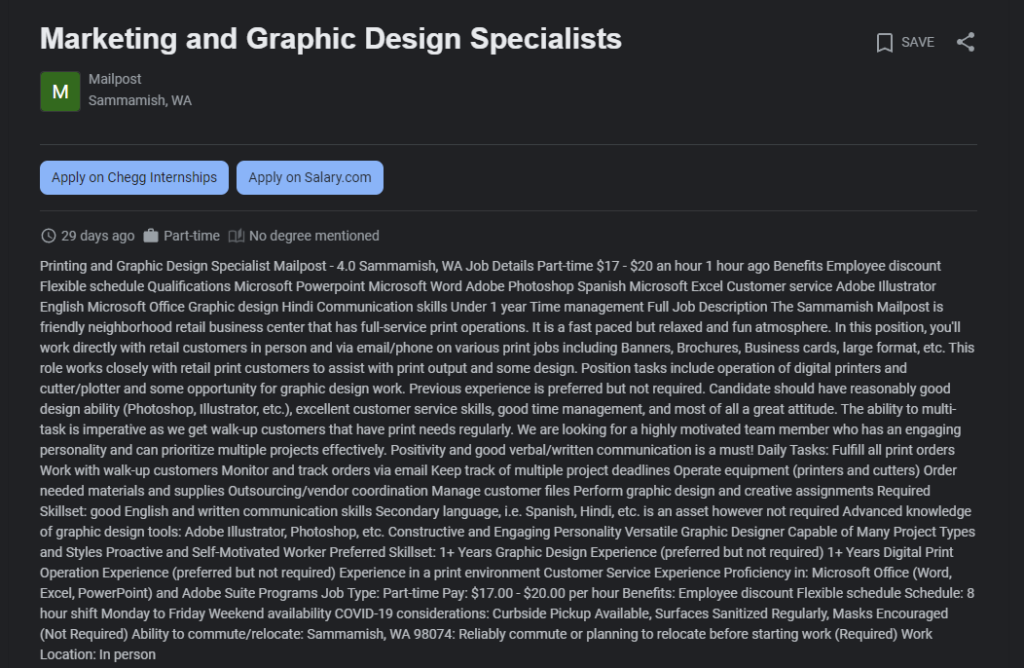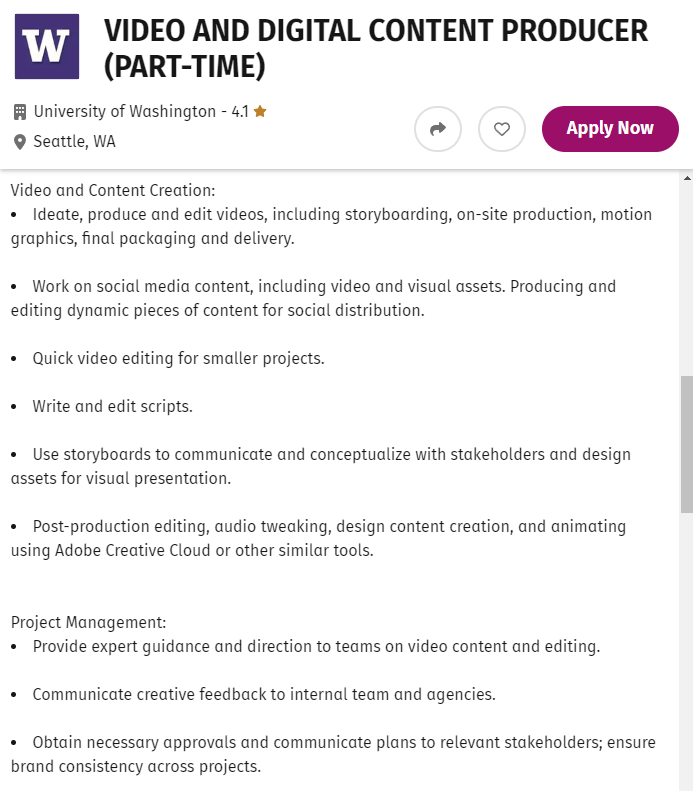Justin Bernardy
For this assignment, we have been tasked with comparing and contrasting contract, freelance, part-time, and full-time work in the field. Below, I will make a list showing the pros and cons of each, as well as talk about which seems the most appealing to me.
Freelance
As the name implies, this type of work comes with a degree of freedom not afforded by the others. You are your own boss, you set your hours and rates, and you find your own clients. What’s more, is that you can typically do this at any skill level as long as there are clients who want to employ you. In other words, you can bypass the need for education, degrees etc. provided you have the skill. Lots of pros to this type of work. Moving on, it is far from a perfect system. The biggest issue with freelance work is that it can be unpredictable and therefore unstable. It can take a lot of time to identify repeat clients and build a reputation that will lend itself to a steady income. Beyond that, there are no benefits. It can also be difficult knowing what to charge, which clients to take on, etc. For me, this would probably come after I had experience in a company.
Contract
There are a number of benefits to contract work to include higher pay (typically) than you might make in a full-time position, exposure to a variety of different kinds of work, networking opportunities, and work-life balance. Similar to freelance work, contract work typically has no benefits, and work can be uncertain as well, and there are often gaps between projects. Creative freedom is also rarely a factor which may make this type of work undesirable to a lot of designers (myself included. I know it isn’t realistic to expect creative freedom, but some degree of it would be nice).
Full-time
Some of the obvious benefits to being employed full-time include stable pay, benefits, career advancement, and access to continued education and resources. Being part of a larger company allows space to grow and learn, and networking also becomes much easier (at least based on what I’ve been reading). Some cons include a lack of creative freedom depending on who you work for (think following style guides), burnout from consistent workload, and fixed salary. While fixed salary could also be argued for as a pro, another way of looking at this is that your pay doesn’t always reflect your work. whether you work 12 hours a day, 365 days a year, or you work 2 hours a day, 7 days a year, the pay is the same.
Part-time
An easy way to weigh the pros and cons of part-time work is to just think of it as full time with less to be excited about. So, limited everything. Limited benefits, limited professional development, limited portfolio development, etc. From what I gather, part time work is most likely beneficial to new graphic designers, or in the form of internships for budding designers still in school. It’s an opportunity to get your foot in the door and network, while also learning a thing or two about design from the professionals.
Summary/ My preference
Where I stand currently, it can feel a little overwhelming thinking about jumping into the creative workspace, but thankfully there are several options. At present, the most appealing option looks to be part time work. I want to work with professionals and grow my skillset, so I can be confident about searching for full time employment in the future. Overall, full-time employment sounds the most stable, and as though it offers the most in terms of career advancement. The further I can advance in the field, and the more I learn and soak up, the more options I have in terms of a career, and the closer I get to having creative freedom and flexibility.
below are three part time job listings I found:


